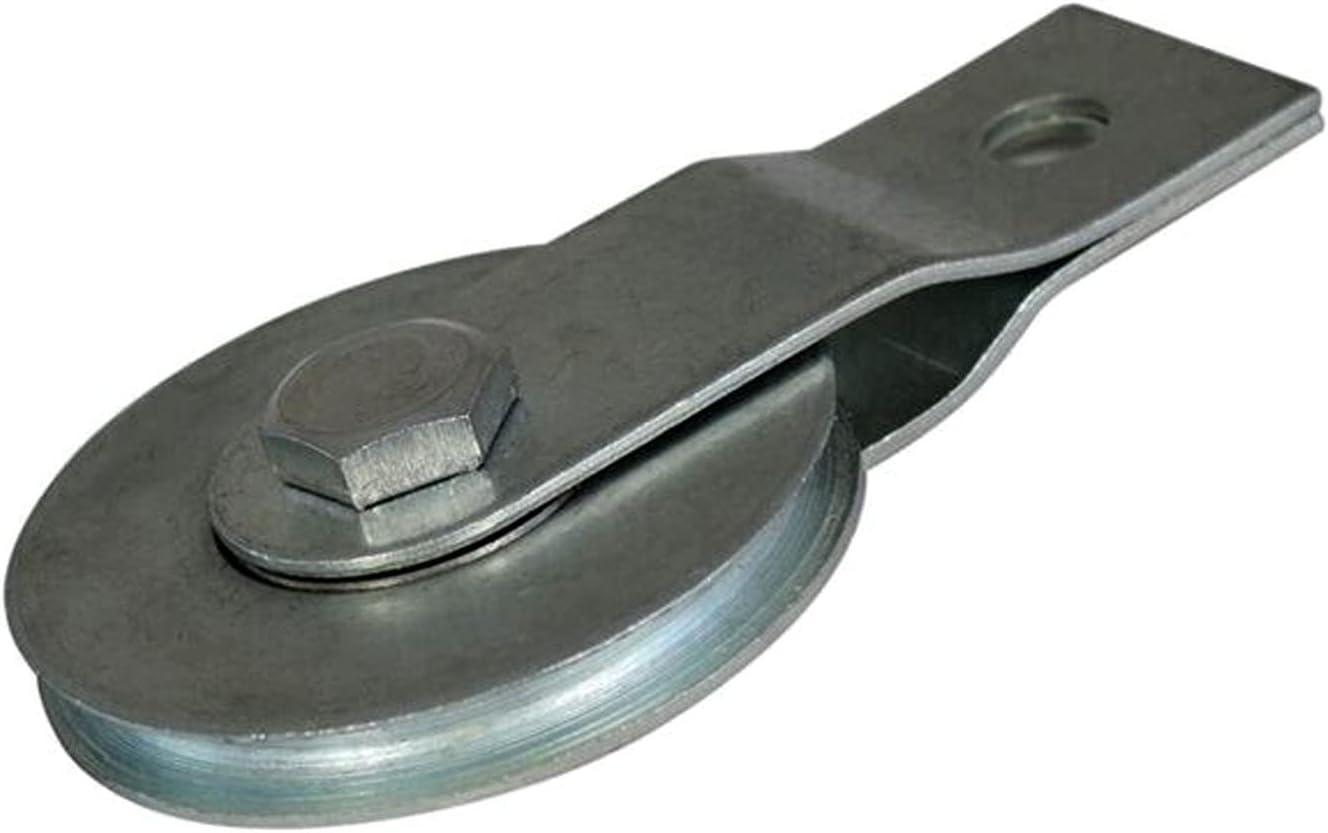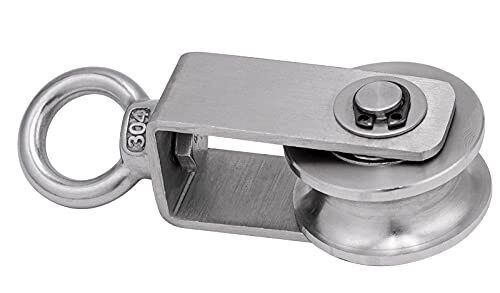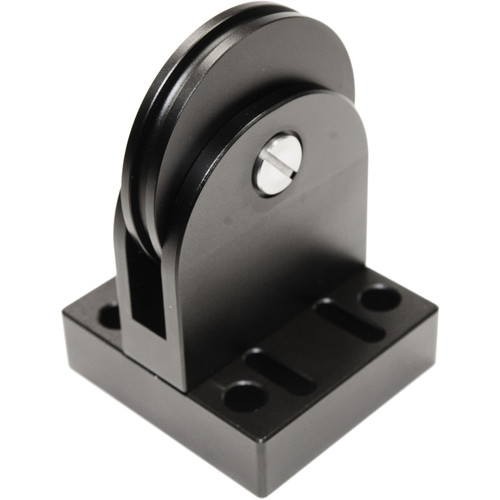Product Description
Head Drive Pulley, Return Pulley,Bend Pulley, Snub Pulley,Tensioning Pulley, Take up Pulley can be provided. We are designing and manufacturing pulleys, using materials of the highest quality in a production process employing advanced technology. This together with the application of the Quality Assurance system certifi ed to ISO 9001:2015, contributes to the production of high quality products offering dependable, long life performance in the field and appreciably reducing maintenance cost. Each our conveyor pulley is individually computer designed to meet the client’s requirements.
|
Product Name |
Belt Conveyor Pulley Drum |
||
|
Type |
Drive Pulley, Bend Pulley,Snub Pulley,Take Up Pulley | ||
|
Length |
200mm-2500mm |
||
|
Materials |
Carbon steel, Stainless steel, Rubber |
||
|
Surface Treatment |
Smooth, CHINAMFG grooved lagging, Herringbone lagging, Ceramic lagging |
||
|
Welding |
Submerged Arc Welding |
||
|
Bearing |
Famous brands |
||
|
Structure |
Tube,shaft,self-aligning bearing,bearing seat/house,hub, locking bushing,end disc |
||
Drive Pulley Introduction:
1. Head/Drive Pulley is located at the discharge terminus of the conveyor.
2. Drive pulley provides the driving force for the conveyor. In order to increase pulley life and traction, it often has a larger diameter than other pulleys.
3. We can supply pulleys with hot vulcanized rubber lagging, plain or grooved, as required by client. Different patterns of grooving such as herringbone or CHINAMFG can be provided to increase tractive friction under dirty or wet conditions. CHINAMFG grooves have the advantage of being installed in any orientation, regardless of belt direction.
Specification of Drive Head Pulley Drum
| Belt Width | 500-2800mm (19-110 inch) |
| Pulley Length | 500-3500mm (19-138 inch) |
| Diameter | 200-1800mm (8-70 inch) |
| Standard | ISO9001:2008, CEMA, DIN, TUV, JIS, AS/NS, etc. |
| Working Life | More than 30,000 hours. |
| Surface | Flat Rubber Lagged, Ceramic Lagged, CHINAMFG Rubber Lagged, etc. |
| Main Material | Carbon Steel |
| Length of conveyor drive pulley depends on the width of conveyor Belt. You can get drive pulleys with hot & cold vulcanized rubber lagging, plain or grooved, as required by client. | |
Bend Pulley Introduction:
1. The bend pulley is used for changing the direction of the belt.
2. The bend pulley is usually installed at the tail part or the vertical take-up equipment part when the belt direction need to 180°bending. It will be installed above the take-up equipment part while 90°bending.
3. The pulley, which is used for extending the contact surface, is usually used for below or equal to 45 degree bending.
4. The surface treatment of the bend pulley can be smooth steel and flat rubber lagging.
Specification of Bend Pulley:
| Belt Width | 500-2800mm(19-110 inch) |
| Pulley Length | 500-3200mm(19-126 inch) |
| Diameter | 200-1800mm(8-70 inch) |
| Standard | ISO9001:2008, CEMA, DIN, TUV, etc. |
| Working Life | More than 30,000 hours. |
| Surface | Flat Rubber Lagged, Ceramic Lagged, CHINAMFG Rubber Lagged, etc. |
| Main Material | Carbon Steel |
| Length of conveyor bend pulley depends on the width of conveyor Belt. You can get drive pulleys with hot vulcanized rubber lagging, plain or grooved, as required by client. | |
Snub Pulley
Snub pulley is used to achieve higher angle of wrap on the drive pulley thereby increasing the traction. It also reduces the belt tension maximizing the life of the conveyor component.It is mounted close to the drive pulley on the return side of the belt.
Specification of Snub Pulley:
| Items | Content |
| Belt Width | 500-2800mm (19-110 inch) |
| Pulley Length | 500-3200mm (19-126 inch) |
| Diameter | 200-1800mm (8-70 inch) |
| Standard | ISO9001:2008, CEMA, DIN, TUV, etc. |
| Working Life | More than 30,000 hours. |
| Surface | Flat Rubber Lagged, Ceramic Lagged, CHINAMFG Rubber Lagged, etc. |
| Main Material | Carbon Steel |
| Length of conveyor Snubpulley depends on the width of conveyor Belt. You can get Snubpulleys with hot vulcanized rubber lagging, plain or grooved, as required by client. | |
Take Up Pulley
The take up pulley will ensure adequate tension of the belt leaving the drive pulley so as to avoid any slippage of the belt, ensure proper belt tension at the loading and other points along the conveyor, compensate for changes in belt length due to elongation, and provide extra length of belt when necessary for splicing purpose.
Specification of take up pulley drum:
| Belt Width | 500-2800mm(19-110 inch) |
| Pulley Length | 500-3200mm(19-126 inch) |
| Diameter | 200-1800mm(8-70 inch) |
| Standard | ISO9001:2008, CEMA, DIN, TUV, etc. |
| Working Life | More than 30,000 hours. |
| Surface | Flat Rubber Lagged, Ceramic Lagged, CHINAMFG Rubber Lagged, etc. |
| Main Material | Carbon Steel |
The components of a pulley drum include the following:
| Drum or Shell | The drum is the portion of the pulley in direct contact with the belt. The shell is fabricated from either a rolled sheet of steel or from hollow steel tubing.The shell has a specific ‘face’ width and diameter which is determined by the width of the belting and the type and rating of the belt to be used on the conveyor. | |
| Diaphragm Plates | The diaphragm or end plates of a pulley are circular discs which are fabricated from thick steel plate and which are welded into the shell at each end, to strengthen the drum.The end plates are bored in their centre to accommodate the pulley shaft and the hubs for the pulley locking elements. | |
| Shaft | The shaft is designed to accommodate all the applied forces from the belt and / or the drive unit, with minimum deflection.The shaft is located and locked to the hubs of the end discs by means of a locking elements. The shaft is supported on both ends by bearings which are housed in plummer blocks, to support the shaft and pulley assembly on the conveyor structure. Shafts often comprise different diameters along their length due to the bending moments and resultant deflection limitations. The diameter of the shaft at the landings for the bearings may be smaller to satisfy the necessary bearing diameter which is more cost-effective (smaller). Similarly in the case of a drive shaft, the drive attachment, may be different to the other diameters along the shaft and hence pulley shafts are often stepped. |
|
| Locking Elements | These are high-precision manufactured items which are fitted over the shaft and into the pulley hubs. The locking elements attach the pulley firmly to the shaft via the end plates.Locking elements work on the friction-grip principle whereby the element is able to be fastened to the shaft and hub simultaneously and concentrically, by tightening a series of screws around the locking element. | |
| Hubs | The hubs are fabricated and machined housings which are welded into the end plates. The hubs are sized according to the size of the pulley, the diameter of the shaft and the size of the locking element which is required for the specific duty. | |
| Lagging | It is sometimes necessary or desirable to improve the friction between the conveyor belt and the pulley in order to improve the torque that can be transmitted through a drive pulley.Improved traction over a pulley also assists with the training of the belt. In such cases pulley drum surfaces are ‘lagged’ or covered in a rubberized material. This cover is usually 8 mm to 12 mm thick and can be plain or have a grooved pattern. The rubber lagging is vulcanized to the pulley shell to ensure that it remains attached under adverse operating conditions. |
|
| Bearing Assemblies | Bearings support the rotating shaft and hence the pulley. The bearings are housed in ‘plummer blocks’ which enable the mass of the pulley assembly plus the belt tension forces to be transmitted to the pulley supporting structure.Plummer blocks are often bolted to ‘sole plates’ which are welded to the structure. The sole plates incorporate jacking screws to enable the pulley to be correctly and relatively easily aligned. |
|
Several types of bearing housing, seals and end disc:
Pulley Drum Warehouse and package:
Pulley Drums:
Our Products: Belt Conveyors, Pulley Drum, Conveyor Rollers Idler, etc.
/* January 22, 2571 19:08:37 */!function(){function s(e,r){var a,o={};try{e&&e.split(“,”).forEach(function(e,t){e&&(a=e.match(/(.*?):(.*)$/))&&1
| Material: | Stainless Steel |
|---|---|
| Surface Treatment: | Polishing |
| Motor Type: | Frequency Control Motor |
| Samples: |
US$ 300/Piece
1 Piece(Min.Order) | Order Sample |
|---|
| Customization: |
Available
| Customized Request |
|---|
.shipping-cost-tm .tm-status-off{background: none;padding:0;color: #1470cc}
|
Shipping Cost:
Estimated freight per unit. |
about shipping cost and estimated delivery time. |
|---|
| Payment Method: |
|
|---|---|
|
Initial Payment Full Payment |
| Currency: | US$ |
|---|
| Return&refunds: | You can apply for a refund up to 30 days after receipt of the products. |
|---|
Are there any environmental considerations when using wire pulleys in outdoor applications?
Yes, there are several environmental considerations to keep in mind when using wire pulleys in outdoor applications. These considerations revolve around the impact on the environment and the sustainable use of resources. Here are some important environmental considerations:
1. Material Selection:
Choosing environmentally friendly materials for wire pulleys is crucial. Opting for materials that are recyclable, biodegradable, or made from renewable resources helps reduce the environmental impact. For example, pulleys made from recycled plastics or materials derived from sustainable sources can be more environmentally friendly compared to those made from virgin materials.
2. Chemical Exposure:
In outdoor applications, wire pulleys may be exposed to various environmental conditions, including exposure to chemicals such as acids, solvents, or corrosive substances. It is important to select pulleys that are resistant to such chemicals to prevent pollution or damage to the environment. Additionally, proper disposal of any chemicals used in pulley maintenance or cleaning is essential to minimize environmental harm.
3. Lubricants and Greases:
Wire pulleys often require lubrication to reduce friction and ensure smooth operation. When selecting lubricants or greases, it is important to choose environmentally friendly options that are biodegradable and have minimal impact on the ecosystem. Using eco-friendly lubricants helps to prevent contamination of soil or water sources in outdoor environments.
4. Wildlife Protection:
In outdoor applications, wire pulleys may be installed in areas inhabited by wildlife. It is essential to consider the potential impact on wildlife and take measures to minimize disturbances. This may include proper installation of pulleys to avoid disrupting animal habitats or using protective measures to prevent animals from getting entangled in the cables or pulleys.
5. Noise and Vibration:
Some outdoor applications may involve noise and vibration generated by wire pulleys. Excessive noise and vibration can have adverse effects on the environment, such as disturbing wildlife or nearby communities. Implementing noise reduction measures, such as using pulleys with noise-dampening features or proper insulation, helps mitigate the environmental impact.
6. End-of-Life Disposal:
Consider the end-of-life disposal of wire pulleys. Whenever possible, choose pulleys that can be recycled or have a minimal impact on the environment when they reach the end of their useful life. Proper recycling or disposal methods should be followed to reduce waste and prevent pollution.
7. Sustainable Manufacturing:
Consider selecting wire pulleys from manufacturers that prioritize sustainable practices in their manufacturing processes. Manufacturers that utilize renewable energy sources, reduce waste generation, and employ environmentally friendly production methods contribute to a more sustainable supply chain.
By considering these environmental considerations and making conscious choices, it is possible to minimize the environmental impact associated with using wire pulleys in outdoor applications. This ensures the sustainable use of resources and helps protect the surrounding ecosystem.
What maintenance practices should be followed to ensure the long lifespan of wire pulleys?
To ensure the long lifespan and optimal performance of wire pulleys, it is important to follow proper maintenance practices. Regular maintenance helps prevent wear and tear, reduces the risk of failures, and prolongs the life of the pulleys. Here are some maintenance practices that should be followed:
1. Inspection:
Regularly inspect wire pulleys for signs of damage, wear, or deformation. Check for cracks, corrosion, or any other visible defects. Inspect the sheaves, bearings, and axles for smooth operation and proper alignment. If any issues are identified during the inspection, take appropriate action such as cleaning, lubrication, or replacement.
2. Cleaning:
Keep wire pulleys clean and free from dirt, debris, or contaminants. Regularly remove any accumulated dust, dirt, or grease using a soft brush or cloth. Use a mild detergent and water solution to clean pulleys if necessary. Avoid using harsh chemicals that may damage the pulley components.
3. Lubrication:
Apply appropriate lubrication to the bearings and axles of wire pulleys. Lubrication helps reduce friction, minimize wear, and ensure smooth operation. Use lubricants recommended by the manufacturer and follow their guidelines for proper lubrication intervals and methods. Avoid over-lubrication, as excessive lubricant can attract dirt and impede the pulley’s performance.
4. Tension Adjustment:
Check and adjust the tension of the ropes or cables used with the wire pulleys. Proper tension ensures efficient operation and prevents excessive strain on the pulley system. Refer to the manufacturer’s guidelines or consult with a professional to determine the appropriate tension for the specific pulley and application.
5. Replacement of Worn Parts:
If any components of the wire pulley, such as sheaves or bearings, show signs of excessive wear or damage, they should be promptly replaced. Worn or damaged parts can compromise the performance and safety of the pulley system. Ensure that replacement parts meet the manufacturer’s specifications and compatibility requirements.
6. Environmental Considerations:
Take into account the environmental conditions in which the wire pulleys are used. Factors such as temperature, humidity, exposure to chemicals, or corrosive substances can affect the lifespan and performance of the pulleys. Implement measures to protect the pulleys from adverse environmental conditions, such as using appropriate coatings or seals, or providing suitable enclosures or covers.
7. Training and Safety:
Ensure that personnel involved in the operation and maintenance of wire pulleys receive proper training. Educate them on safe handling practices, including proper lifting techniques, load capacity limits, and the use of personal protective equipment. Promote a culture of safety and encourage reporting of any concerns or incidents related to the pulley system.
By following these maintenance practices, the lifespan of wire pulleys can be significantly extended, ensuring reliable and safe operation over an extended period. Regular inspections, cleaning, lubrication, and timely replacement of worn parts are essential for maintaining the performance and longevity of wire pulleys.
How does the design of wire pulleys contribute to their functionality and durability?
The design of wire pulleys plays a crucial role in their functionality and durability. Here are some key design factors that contribute to the performance and longevity of wire pulleys:
1. Grooved Wheel or Sheave:
The grooved wheel or sheave in a wire pulley is designed to provide a smooth surface for the wire or cable to pass over. The groove helps guide the wire and prevents it from slipping off the pulley during operation. A well-designed and precisely machined groove ensures proper alignment and contact between the wire and the pulley, minimizing friction and reducing wear on the wire.
2. Bearing Systems:
High-quality wire pulleys often incorporate bearing systems to reduce friction and ensure smooth rotation. Bearings, such as ball bearings or roller bearings, allow the pulley to rotate freely with minimal resistance. This design feature not only improves the efficiency of the pulley system but also reduces wear on the pulley and wire, enhancing the overall durability.
3. Materials Selection:
The choice of materials for the pulley’s construction significantly impacts its durability. Strong and durable materials, such as steel or stainless steel, are often used to withstand heavy loads and resist wear and corrosion. Additionally, the selection of materials can also consider factors such as weight reduction (using lightweight materials like aluminum in certain applications) or noise reduction (using low-friction plastics like nylon).
4. Load-Bearing Capacity:
The design of wire pulleys takes into account the anticipated load-bearing capacity. The pulley’s structure, including the size and thickness of the wheel, the diameter of the groove, and the overall construction, is engineered to handle the expected loads without deforming or failing. Proper load-bearing capacity ensures that the pulley can withstand the forces exerted on it and maintain its functionality and integrity over time.
5. Alignment and Stability:
Wire pulleys are designed to maintain proper alignment and stability during operation. The pulley should be securely mounted or supported to prevent unnecessary movement or vibrations. Proper alignment ensures that the wire remains in the groove, preventing it from slipping or coming off the pulley. Additionally, stable and balanced operation minimizes stress on the pulley and wire, enhancing their durability.
6. Maintenance and Accessibility:
Consideration for maintenance and accessibility is also important in the design of wire pulleys. Easy access to the pulley for inspection, lubrication, and potential replacements or adjustments simplifies maintenance tasks. Well-designed pulleys often have features that facilitate maintenance, such as removable covers or access points.
By incorporating these design considerations, wire pulleys can optimize functionality, reduce friction and wear, enhance load-bearing capacity, promote stability, and ensure long-lasting durability in various applications.
editor by CX
2024-04-25




